Palavras-chave:
bacterias, biodeterioro, herbario, hongos filamentosos, insectos.Resumo
El daño biológico en colecciones se hace a través de la acción de insectos y microorganismos, principalmente hongos, los cuales causan fisuras, rompimientos y decoloración en la superficie de hojas. Teniendo en cuenta la importancia de preservar la colección biológica del Herbario UPTC, se revisaron 5572 ejemplares de angiospermas para determinar el estado de contaminación por hongos o insectos. Los insectos se recolectaron con pincel y agujas de disección, se preservaron en alcohol al 70 % y se determinaron hasta el nivel taxonómico posible. Se empleó el raspado de áreas con cambio de coloración, roturas y presencia de hongos y el método de sedimentación en placa para el muestreo ambiental empleando PDA como medio de cultivo. Los géneros de hongos identificados fueron Aspergillus, Cladosporium, Penicillium, Alternaria, Fusarium y Verticillium. En dos muestras se encontraron levaduras, en 10 se aislaron Bacilos Gram+ esporulados
y en una Bacilos Gram- esporulados. El hallazgo de 12 ejemplares con contaminación por hongos y la presencia de nueve insectos, especialmente formas inmaduras del orden Psocoptera, en siete ejemplares, indican que el manejo de la colección del Herbario UPTC para la época en que se realizó este estudio se encontraba en un estado de conservación relativamente bueno. Sin embargo, la presencia de los agentes de biodeterioro identificados, sugiere realizar monitoreos periódicos e implementar un plan de manejo integrado a largo plazo que incluya la reducción o eliminación del control químico para conservar la integridad de los ejemplares y evitar el riesgo en las personas a cargo de la colección.
Downloads
Referências
AIRA, M. J., RODRÍGUEZ-RAJO, F. J., JATO, V. & PIONTELLI, E. 2006. Análisis cuantitativo y cualitativo de la aeromicota aislada de la catedral de Santiago de Compostela (Galicia, España). Boletín Micológico 21: 27-34.
BARNETT, H. L. & HUNTER, B. B. 1998. Ilustrated genera of imperfect fungi. APS Press. Pennsylvania, USA. 240pp.
BORREGO, S., LAVIN, P., PERDOMO, I., GOMEZ DE SARAVIA, S. & GUIAMET, P. 2012. Determination of indoor air quality in archives and biodeterioration of the documentary heritage. International Scholarly Research Network Microbiology 2012: 1-10.
BORROR, D. J., DELONG, D.M. & TRIPLEHORN C. A. 2005. An introduction to the study of insects. V edition. Saunders College Publishing. Philadelphia, USA. 928pp.
BUENO, D. J., SILVA, J. O. & OLIVER, G. 2003. Hongos ambientales en una biblioteca: un año de estudio. Anales de Documentación 6: 27-34.
CRONQUIST, A. 1981. An integrated system of classification of flowering plants. Columbia University Press, Nueva York.
DE LEO, F. & URZI, C. 2014. Microfungi from deteriorated materials of cultural heritage. In MISRA, J. K., TEWARI, J. P., DESHMUKH, S. K., VÁGVÖLGYI, C. (eds.), Fungi from different substrates. CRC Press Taylor & Francis Group. New York, USA. 486pp.
DE PAOLIS, M.R. & LIPPI, D. 2008. Use of metabolic and molecular methods for the identification of a bacillus strain isolated from paper affected by foxing. Microbial Research 163(2): 121-131.
DELGADILLO, C. 1986. Briófitas. En LOT, A. & CHIANG, F. (Comps.), Manual de Herbario. Administración y manejo de colecciones, técnicas de recolección y preparación de ejemplares botánicos. Consejo Nacional de la Flora de México, México D.F. 161pp.
DOVE, C. J. 1995. Evaluation of an integrated pest management program, division of birds, U.S. National Museum of Natural History. Collection Forum 11(1): 28-38.
FERNÁNDEZ, F., MUÑOZ-SABA, Y., SIMMONS, J.E. & SAMPER, C. 2005. La gestión en la administración de las colecciones biológicas. En: SIMMONS, J.E. & MUÑOZSABA, Y. (eds.). Cuidado, Manejo y
Conservación de las Colecciones Biológicas. Universidad Nacional de Colombia, Bogotá, D.C. 288pp.
FLORIAN, M. L. 1990. Freezing for Museum insect pest erradication. Collection Forum 6(1): 1-7.
FUNK, V. A. 2003. 100 uses for a herbarium (well at least 72), ASTP Newsletter, 17: 17-19.
GAIROLA, S., MAHMOUND, T., BHATT, A. & EL-KEBLAWY, A.A. 2013. Importance of seed banking and herbarium collections in biodiversity conservations and research: a new iniciative in the United Arabes Emirates. Current Science 105(8): 1048-1050.
GALLO, F. 1993. Aerobiological research and problems in libraries. Aerobiologia 9: 117-130.
HALL, A. V. 1988. Pest Control in Herbaria. Taxon 37(4): 885-907.
HARTUNG, C. & RODRÍGUEZ, P. 1996. Frecuencia de hongos en el ambiente de dos bibliotecas en Venezuela. Boletín Informativo de la Sociedad Venezolana de Microbiología 16(2): 11-21.
HOWLETT, P. & HORÁK, J. 2006. Integrated collection management at the National Museum Wales. Collection Forum 21(1-2): 58-63.
LANE, R. 2006. Foreword. Collection Forum 21(1-2): 3.
LEWIS, W. H. 1991. Selective insect damage in Tropical Herbarium collections. Annals of the Missouri Botanical Garden 58 (1): 91.
LINNIE, M. J. 1994. Pest control in Natural History Museums, a world survey. Journal of Biological Curation 1(5): 43-58.
LINNIE, M. J. 1996. Integrated Pest Management: A proposed strategy for Natural History Museums. Museum Management and Curatorship 15(2): 133-143.
LINNIE, M. J., VANCE, D., FRIEDMAN, B. A., MILBURN, M. & BOWDLER, D. 1990. Professiional notes: Conservation: Pest Control in Museums- the use of chemicals and associated health problems. Museum Management and Curatorship 9: 419-433.
LÓPEZ, M. R., RUIZ, S. D., HUERTA, J. G., ESQUENAZE, A. & ÁLVAREZ, T. 1986. Variación estacional de hongos productores de alergias en el sur de la Ciudad de México. Allergol et Immunopathol 14: 43-48.
LOT, A. & CHIANG, F (comps.). 1986. Manual de herbario. Consejo Nacional de la Flora de México, A.C. México. 161pp.
MAGHRABY, T. A., GHERBAWY, Y. A. & HUSSEIN, M. A. H. 2008. Keratinophilic fungi inhabiting floor dusts of student houses at the South Valley University in Egypt. Aerobiología 24: 99-106.
MEDINA, L., TUOZZO, A., HERRERA, J., PEROZO Y. & GONZÁLEZ, L. 1999. Estudio de hongos en bibliotecas de la Universidad de Carabobo-Valencia 3(1): 1-17.
MERRILL, E. D. 1948. On the control of destructive insects in herbarium. Journal of the Arnold Arboretum 29: 103-110.
PÁEZ, V. F. E. 1997. Guía para la conservación preventiva en archivos. Archivo general de la nación. Colombia. 23-29.
PALACIOS, F. & MARTÍNEZ, C. 1992. The problem of biodeterioration of natural history collections in tropical countries. Simposio internacional y primer congreso mundial sobre preservación y conservación de colecciones de historia natural. Ministerio de Cultura, Madrid. 426pp.
PANGALLO, D., SIMONOVICOVA, A., CHOVANOVA, K. & FERIONE, P. 2007. Wooden art objects and the museum environment identification and biodegradative characteristics of isolated
microflora. Letters in Applied Microbiology 45(1): 87-94.
PINNIGER, D. B. 2003. Saving our treasurescontrolling Museum pests with temperature extremes. Pesticide Outlook 14: 10-11.
PINZARI, F., PASSQUARIELLO, G. & DE MICO, A. 2006. Biodeterioration of paper: A SEM study of fungal spoilage reproduced under controlled conditions. Macromolecular Symposia 238: 57-66.
PROSPERO, J. M., BLADES, E., MATHISON, G. & NAIDU, R. 2005. Interhemispheric transport of viable fungi and bacteria from Africa to the Caribbean with soil dust. Aerobiologia 21:1-19.
QUERNER, P., SIMON, S., MORELLI, M. & FÜRENKRANZ, S. 2013. Insects pests management programmes and results from their application in two large museums collections in Berlin and Vienna. International Biodeterioration & Biodegradation 84: 275-280.
RICCI, S., BRUNI, M., MERIGGI, A. & CORSICO, R. 1996. Aerobiological monitoring for fungal spore in rehabilitation hospital in northem. Aerobiologia. 12(4): 233-37.
ROJAS T.I., MARTÍNEZ, E., AIRA, M.J. & ALMAGUER, M. 2008. Aeromicota de ambientes internos: comparación de métodos de muestreo. Boletín Micológico 23: 67-73.
SÁENZ, M. R. & DE LA LLANA, A. A. 1990. Entomología Sistemática. Managua. Universidad Nacional Agraria, Managua, Nicaragua. 224pp.
SAIZ-JIMÉNEZ, C. & GONZÁLEZ, J. M. 2007. Aerobiology and cultural heritage: some reflections and future challenges. Aerobiología 23: 89–90.
SEQUEIRA, S., CABRITA, E. J. & MACEDO, M. F. 2012. Antifungals on paper conservation: An overview. International Biodeterioration & Biodegradation 74: 67-86.
SIMMONS, J. E. & MUÑOZ-SABA, Y. (eds.). 2005. Cuidado, manejo y conservación de las colecciones biológicas. Universidad Nacional de Colombia, Bogotá. 288pp.
SINGH, A., GANGULI, M. & SINGH, A.B. 1995. Fungal spores are an important component of library air. Aerobiología 11: 231-237.
STEPALSKA, D. & WOLEK, J. 2005. Variation of fungal spore concentrations of selected taxa associated to weather conditions in Cracow, Poland, in 1997. Aerobiología 21: 43-52.
SUAREZ, A.V. & TSUTSUI, N.D. 2004. The value of Museum collections for Research and Society. Bioscience 54:66-74.
TAYLOR, J. 2005. An integrated approach to risk assesments and conditions surveys. Journal of the American Institute for Conservation 44(2): 127-141.
VAILLANT, C. M. & VALENTÍN, N. 1996. Principios básicos de la conservación documental y causas de su deterioro. Primera edición. Editorial Ministerio de la Educación y Cultura, Madrid. 158pp.
VALENTÍN, N. 1993. Comparative analysis of insect control by nitrogen, argon and carbon dioxide in Museum, archive and herbarium collections. International Biodeterioration & Biodegradation 32: 263-278.
VALENTÍN, N. 2001. Microbial contamination and insect infectation in spanish museums, archives and libraries. Coalition (3): 5-6.
VALENTÍN, N., VAILLANT, M. & GUERRERO, H. 1997. Programa de control integrado de plagas en bienes culturales de países de clima mediterráneo y tropical. Apoyo 7: 13-14.
WILLIAMS, S. L. & CATO, P. S. 1995. Interaction of research, management, and conservation for serving the long-term interest of natural history collections. Collection Forum 11(1): 16-27.
WILLIAMS, S. L. & MCLAREN, S. B. 1990. Modification of storage design to mitigate insect problems. Collection Forum 6(1): 27-32.





